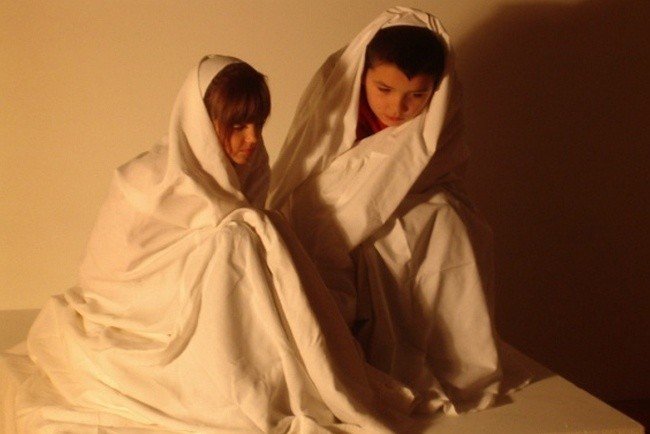Events
'Beliefs & Culture'Nigel Meager
02 November - 10 November 2004
St Thomas Primary School | Mayals PrimarySchool Knelston Primary School | St Helen's Primary School
What do we believe? How do we account for the world around us? How should we behave towards others?
These are some of the questions that challenge different cultures and religious believers all over the world. Based on deeply held convictions, the underlying philosophies lead to a great deal of artistic expression. Can we help children to understand more about religious beliefs and in doing so understand more about the art that is created by different religions all over the world? If children created their own imaginary religions could they create artwork for them?
They are also the questions posed by artist and art educator, Nigel Meager, who is working at Mission Gallery in November 2004. The project includes work in the classroom followed by a one day workshop at Mission Gallery.
It is not easy to grasp the two concepts of culture and creativity. Yet despite this slipperiness they suggest families of ideas that are vital to learning in primary schools.
Culture could be thought of as the outcome of groups of people, large or small, coming together and expressing behaviours and ideas that are meaningful and have something in common. Or, culture could be used to suggest a family of creative behaviours and ideas that describe an individual, group or society.
Creativity is the concept that encompasses the making of something new. Learning about making something new and about how people come together to create meaning should be a central component of any education. The arts would seem to be the obvious home for such teaching and learning.
Creativity and Culture: Art Projects for Primary Schools by Nigel Meager
Paperback 155pp | Fully illustrated colour
Published by NSEAD | 06 0 904684 30 X
This is a book full of ideas about teaching art in primary schools. There are detailed descriptions of projects that will help promote teaching and learning.
The activities are designed to give control of meaning to children. Fostering children's understanding and respect for their own and other cultures is a central theme. At the core of the book is the suggestion that children will understand more about culture and cultural objects after they have created imaginative cultures of their own.
Projects include: islands; stories, myths and legends; identity; abstraction; imagination; beliefs and living with other people. There are links to ideas about teaching processes such as painting, printing, textiles, graphic design, sculpture, using cameras and drawing. Teachers are invited to integrate ideas about world cultures into the way children work
